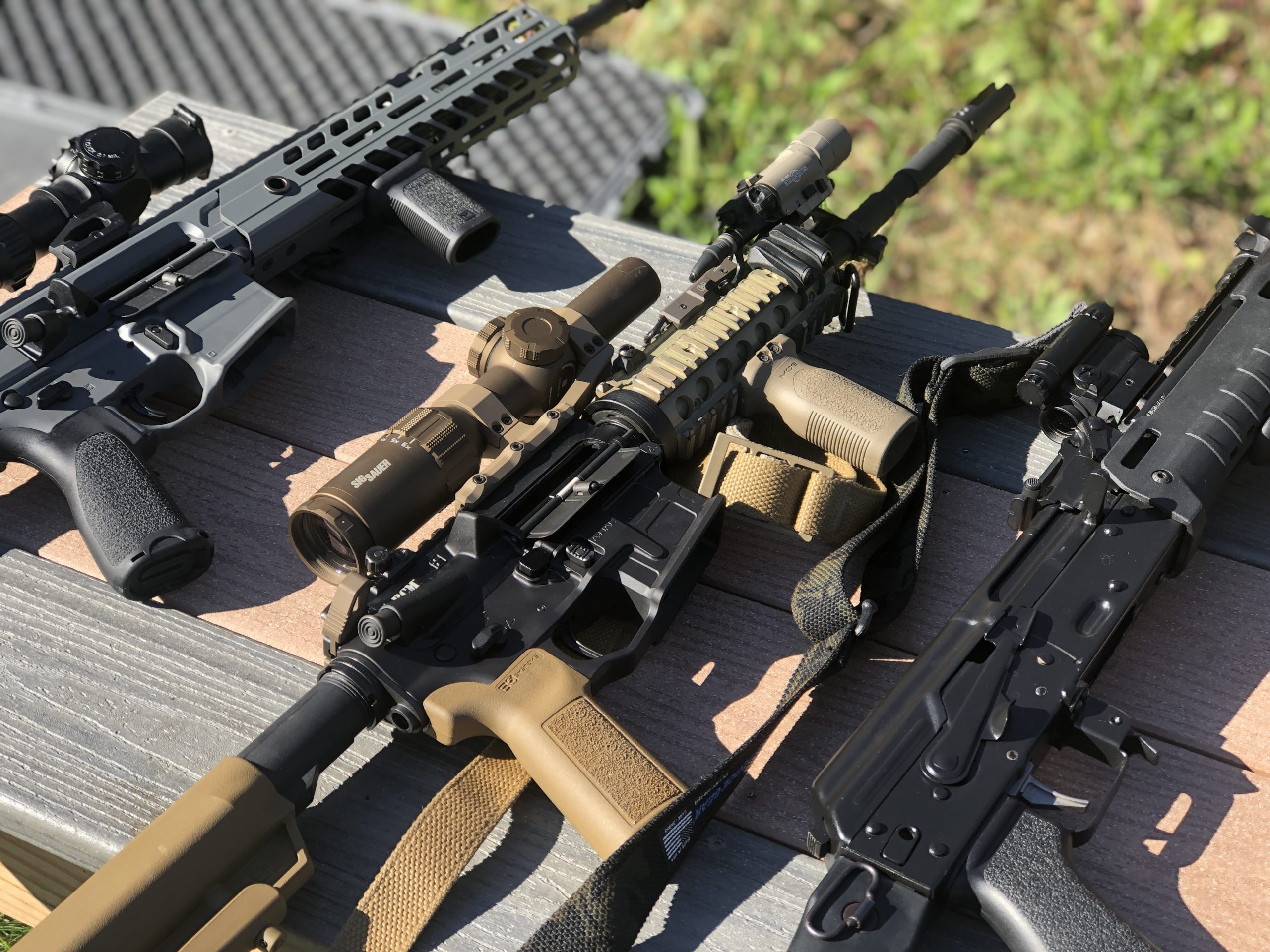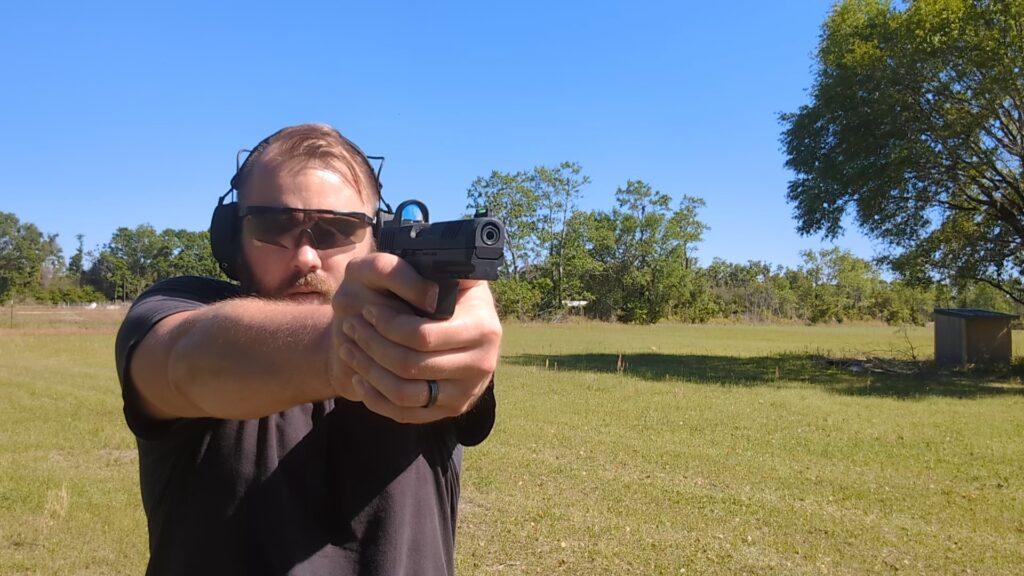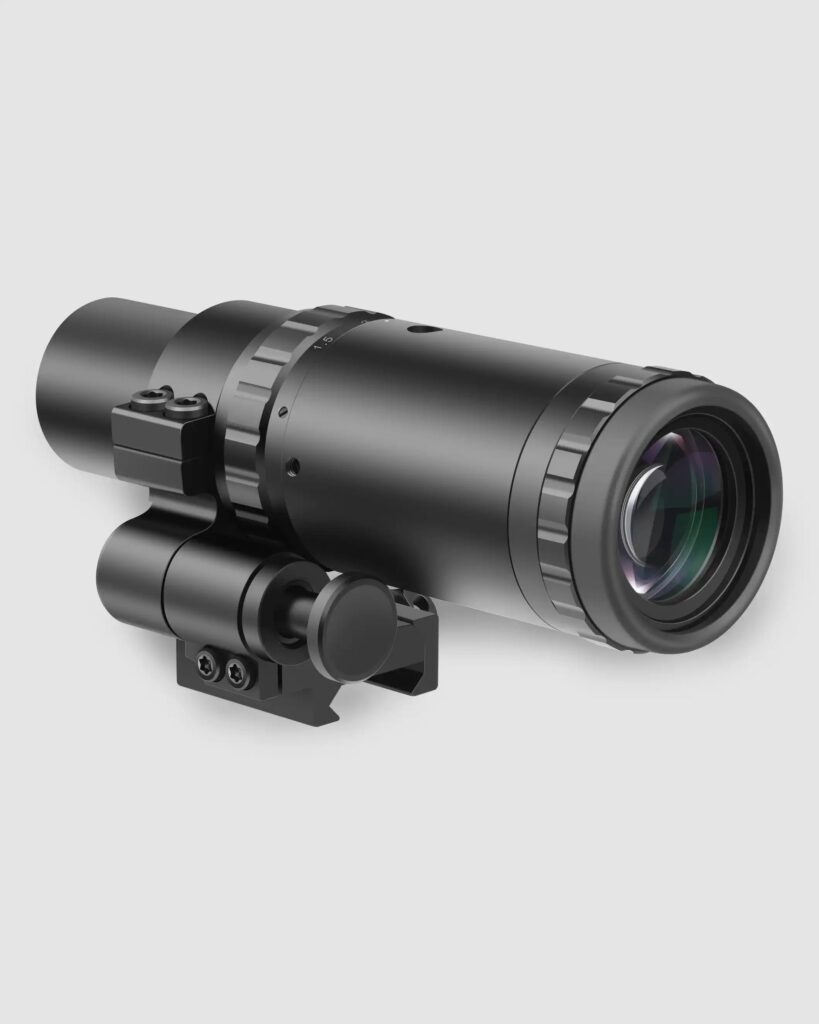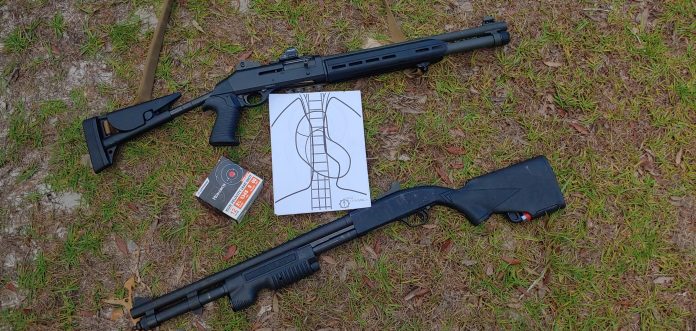Options… Options… Options… That is the State of the AR-15 as we close out 2020. So many options.
Rail Systems and Negative Space Mounting
M-LOK is the way. Keymod is still prominent in a few forms. The proprietary systems like LWRCi has on their piston guns are still floating around too. Freefloating an AR-15’s barrel underneath a handguard that exposes, at most, the last 4 inches has become the normal.
The quadrail, freefloating or not, isn’t dead and truth be told the updated clamshell handguards from B5 Systems and Magpul are still perfectly viable options for users that need to cut costs without sacrificing critical functionality. But that cut is generally unnecessary as the costs of getting the freefloating parts are very nearly the cost of the non-freefloating parts. Rigidity in the handguard system is a different discussion but one that can be looked upon at need.
Advertisement — Continue Reading Below
Barrel Lengths and Quality
16? 10.5? 14.5? 11.5? 13.7? 12.5? … 20? The ‘optimal’ barrel length for the AR-15 seems to have a new answer every few minutes as someone tries a slightly different length but the answer for 2020 I would have to say is… 14.5 for general purpose. 11.5 for size. 20, still, for velocity.
This is all for 5.56 caliber AR-15’s, I treat other calibers in the same line of thought as other barrel lengths. Purpose driven.
Barrel QUALITY is secondary to barrel length. The quality of the steel, the surface treatments, and the rifling cut, are going to determine what the barrel can do for you. Cold Hammer Forged with chrome lining is still the standard to go by, despite the accuracy drawbacks, due to the longevity it can achieve. 15,000-30,000 rounds depending on the expected ammunition and rate of fire.
Advertisement — Continue Reading Below
But nitride emerged as an alternative, and one that may take over for rifle barrels in several applications. Not machine guns, they still benefit from chrome’s durability and can deal with the accuracy degradation through volume. But the clean rifling cut in a nitride treated barrel has emerged as an outstanding standard for barrel performance in all aspects, even under harsh environments.
Length determines average velocities for a round. Quality, rate of the rifling cut and finish will finalize accuracy expectations. Coating or surface treatment and steel selection will give an indication of longevity. The barrel is the heart of the system and is one of the two parts that need the most attention. The other being the quality of the bolt.
Receiver quality matters too, but mostly from the standpoint of being properly machined to an in specifications finished product. Parts must line up.
Advertisement — Continue Reading Below
Ambidexterity
The ability for right and left handed shooters to run rifles equivalently has emerged nicely in the last few years. 2020 has landed us with several quality options for ambi AR-15’s.
Gone, is the left side ejection in AR rifles. That fad popularized by STAG seems to have quietly seated itself next to rotating quad-rails (although it was genuinely more useful than a roating quad-rail).
But selectors, magazine releases, and bolt locks/releases being easily operable from either shoulder and with either hand are features to be admired when done well. LWRCi, Radian, ADM, KAC, and many more have made this a reality within their carbines. Those that do not are easily upgraded with a few easily exchanged parts, prioritizing the selector.
Advertisement — Continue Reading Below
My favorite lowers in this regard have to be Radian A-DACs. I did not know how much I like being able to lock the bolt open with the magazine release until I had the ability.
Triggers
Geissele. Enough said.
Actually, the field of triggers is well populated with good options if you are looking to game. There are drop-in self-contained single and two-stage options galore for anywhere between some money to some more money.
Advertisement — Continue Reading Below
I will say again, stock GI triggers cut well work well. I like the coated option offerings from ALG, BCM, LWRCi, and more even better and they are generally quite affordable. The clean the press and break just enough while still keeping the rifle operating ‘mil-spec’ which could be a requirement.
Several companies have passable two-stage direct replacement triggers also. Passable is not meant as a disparaging comment on their quality. They function well, I liked the press and break, and they reset and ran flawlessly. Aero Precision and Rock River Arms Two-Stage triggers are well worth their lower entry investment if an extra $100+ to buy a G trigger is not in the works.
At the end of the day, the man or woman with the stock GI-ish AR-15, the one with a front sight post and MOE clamshell type handguard rocking mil-spec/+ bolt (seriously, don’t cheap out on the bolt carrier of all the parts) and trigger who can spend 200-300 rounds working critical skills on the regular is better off than the one with a Knight’s SR-15 in their safe that maybe got zeroed… maybe.
Advertisement — Continue Reading Below
DIY
DIY home built rifles exploded in popularity and they show no signs of slowing down. We like options, we like being able to select exactly what we want in our tools. New car, new gun, or new home. We are going to put our personal preferences into the final product.
Whether it was just finishing out a lower and locking a factory completed upper onto it, or assembling each part onto the next with proper torque and staking (stake your receiver castle nut) and selecting each component carefully from recommendations, you made your rifle.
In my opinion Aero Precision has taken the DIY market in hand and shepherded it to a place of enlightenment. The M4E1 set is the user friendliest base you could build a rifle on. You don’t even have to finish it out with their handguard or trigger or the excellent Ballistic Advantage barrels the chose to fly the AP brand on. The receivers start it all and the little improvements, like the blessed threaded bolt catch, make life easier when you aren’t chasing detents, springs, and breaking roll pins.
Advertisement — Continue Reading Below
My next recommendation are the Radian sets, again with or without handguard. They are more expensive, in exchange for more more features. And a lot of the little parts work is already done for you. No fiddling with a lower parts kit and its tiny ready to escape bits, add your trigger and grip of choice then seal it up with the supplied Talon selector and you are done. The upper is near as easy but since you are dealing with torque and handguards it will always be more involved.
Neither of these are to say you cannot grab X or Y brands lower that is there on the shelf and start putting yours together on an old tried-and-true mil-spec forging. Those have worked and will continue to do so for decades, but Aero played the smarter not harder card and Radian sets you up for success out of the box.
Best Buy Value
“Okay, Keith. That’s all well and good. “All the options”. But I just need a best bang-for-my-$ rifle. What do I get?”
Advertisement — Continue Reading Below
Easy.

IWI US’s first totally US product, the Z-15 was spec’d and sourced as an ideal out-of-the-box 2020 production AR-15.
And it costs $899… Probably less.
- Good barrel, 4150 nitride steel with the sweet spot 1:8 twist.
- Good bolt, properly staked, treated, and proper steel.
- Good handguard, 15″ 7-Axis M-LOK with a top rail.
- Good modern furniture, B5 systems grip and stock and an M-LOK QD point for the rail in the box.
- You can run proper sling and equipment on the rifle and are finally not subjected to tossing the A2 grip immediately.
- Good muzzle device, the A2 is a perfect selection for an unsuppressed duty gun.
- We like to pretend the A2 wasn’t good, but really all that it wasn’t effective at was mounting your preferred suppressor. So picking a ridiculous brake or other expensive comp only served to make you spend more to replace it.
- Good control suite, Mil-Spec
- Everyone who is going to drop their favorite trigger, selector, charging handle, bolt catch, etc. into this gun was first, not saddled with a part they needed to replace out of the box and second didn’t spend extra on an expensive part they were going to replace.
Awhile ago I would have given this spot to the FN Tactical Carbine FDE P-LOK. It was around $1,200-1,300 most places and offered the addition of a cold-hammer forged chrome barrel. It wasn’t the “better” barrel that sold me much as nobody was doing such a nicely put together overall base rifle for less. Plenty of companies were in the club, making a roughly $1,200 rifle that was certainly worth the ticket, but IWI landed it for $899.
It’s essentially the FN rifle. All the same, or slightly, improved features or conveniences. Now, before someone says, “But the barrel, Keith!”
“But the barrel, Keith!”
*Sigh*
Okay, I have several hammer forged 1:7 guns featuring chromed barrels. They are fantastic systems, I have no complaints. But from a practical standpoint I do not need chrome when I have nitriding and I do not need 1:7 because I am not firing M856 tracer. This makes the 1:8 4150 steel with nitride coating barrel a more informed choice both cost wise and considering performance within expected ammunition selection of every FMJ, match, and defensive round in 5.56 currently in circulation.
It is almost like the design team thought it all through rather nicely to maximize their spend… and yours. A company best previously known for not producing AR-15’s produces one of the best now, in my considered opinion.
Oh, and they do a 12.5 too.















